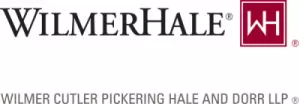What you need to know:
- The Telesto decision contains perhaps the most detailed analysis to date on when the Court of Federal Claims may hear an OTA protest.
- The Court introduces the concept of a "jurisdictional blackout" under which its jurisdiction depends on the particular phase an OTA is in.
Judge Hertling's recent decision in Telesto Group, LLC v. United States provides a novel approach for determining when Court of Federal Claims (also "COFC") has jurisdiction to consider a protest of a project under the Defense Department's Other Transaction Authority ("OTA"). Telesto Grp. v. United States, No. 24-1784, 2025 WL 1551279 (Fed. Cl. 2025). Judge Hertling introduced the concept of a "jurisdictional blackout" and clarified that the Court only has jurisdiction at the phases of an OTA's life cycle that are "in connection with a procurement or a proposed procurement." Those phases are (1) "at the outset" of the OTA and (2) after "the prototyping phase is concluded, and the agency decides to proceed with a proposed procurement." Id. at *14. Judge Hertling's view, COFC lacks jurisdiction in the interim—"[d]uring the performance of the prototyping phase of an OT." Id.
Background
Telesto Group, LLC ("Telesto") filed a bid protest in connection with the Army's Enterprise Business System-Convergence ("EBS-C") program, a prototyping effort to consolidate and improve Army business systems. Id. at *1. The prototyping stage was divided into seven steps, after each of which the Army decided which contractor would move on to the next step. Id. at *3. Only Accenture Federal Services, LLC ("Accenture") was invited to Step 7. Id. at *1.
Telesto alleged that the following: (1) the Army failed to detect Accenture's alleged fabrication of a key component of Step 4, (2) the Army changed the requirements for Step 5, (3) these actions led the Army to improperly eliminate Telesto from moving on to , and (4) the Army violated the OTA statute by not including a nontraditional defense contractor. Id.
Jurisdiction and a Jurisdictional Blackout
The Court assessed whether it had jurisdiction over the OTA protest in light of the Federal Circuit's broad construction of "in connection with a procurement or a proposed procurement." Id. at *8 (citing 28 U.S.C. § 1491(b)(1)).
The Court determined whether the OTA was "in connection with a . . . proposed procurement" by dividing the OTA into three phases: (1) the outset of the OTA, when the Army issued the Statement of Need and Prototype Project Opportunity Notice ("PPON"), (2) the prototyping phase, and (3) the conclusion of the prototyping phase, when the Army "determined both that the process was successful and that it would acquire the successful prototype through a follow-on production contract." Id. at *14. The Court determined that the first and third phases were "in connection with a . . . proposed procurement." Id. at *9, *14. The second phase, which included "the agency's evaluations of the participants' performance at various stages of" the prototyping phase (id. at *15), was not "in connection with a . . . proposed procurement" and the Court therefore lacked jurisdiction. That phase "[was] an effective jurisdictional blackout." Id. at *14.
The Court found jurisdiction for only two of Telesto's protest grounds, both of which challenged the Army's conduct at the outset of the prototyping process. Id. at *18. The Court ruled for the Army on both grounds. Id. at *26.
Takeaways
This decision contains perhaps the most detailed analysis to date of the circumstances under which COFC may exercise jurisdiction over a challenge to an OTA. It also offers contractors a new framework to consider when deciding whether to protest an OTA. This decision, however, does not have precedential value for future decisions by the Court of Federal Claims, and Judge Hertling admitted that the Telesto decision departs from the Court's prior holdings in Hydraulics Int'l, Inc. v. United States, 161 Fed. Cl. 167, 192 (2022), and Raytheon v. United States, 175 Fed. Cl. 281, 293. Id. at *14. The Court also acknowledged the complexity of the "jurisdictional puzzle" and called on Congress to "help untangle the web" and on the Federal Circuit to provide guidance. Id. at *16.
The content of this article is intended to provide a general guide to the subject matter. Specialist advice should be sought about your specific circumstances.
[View Source]




